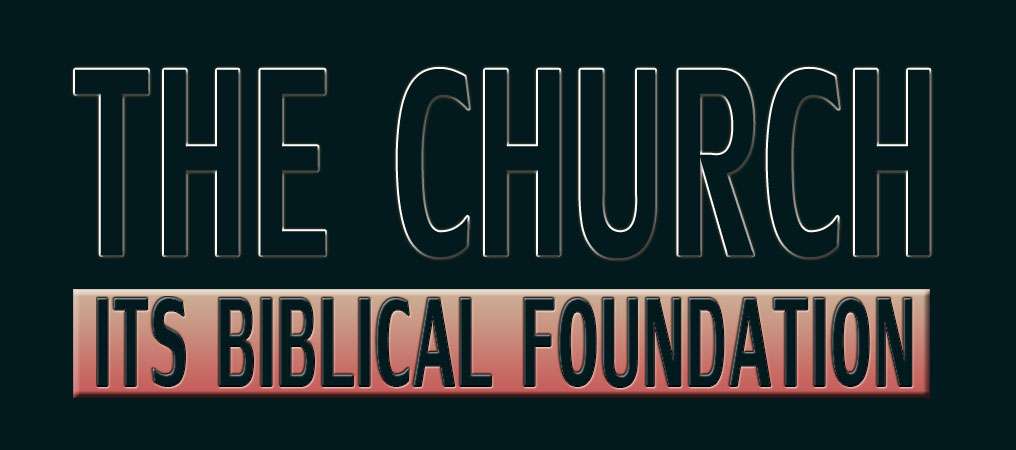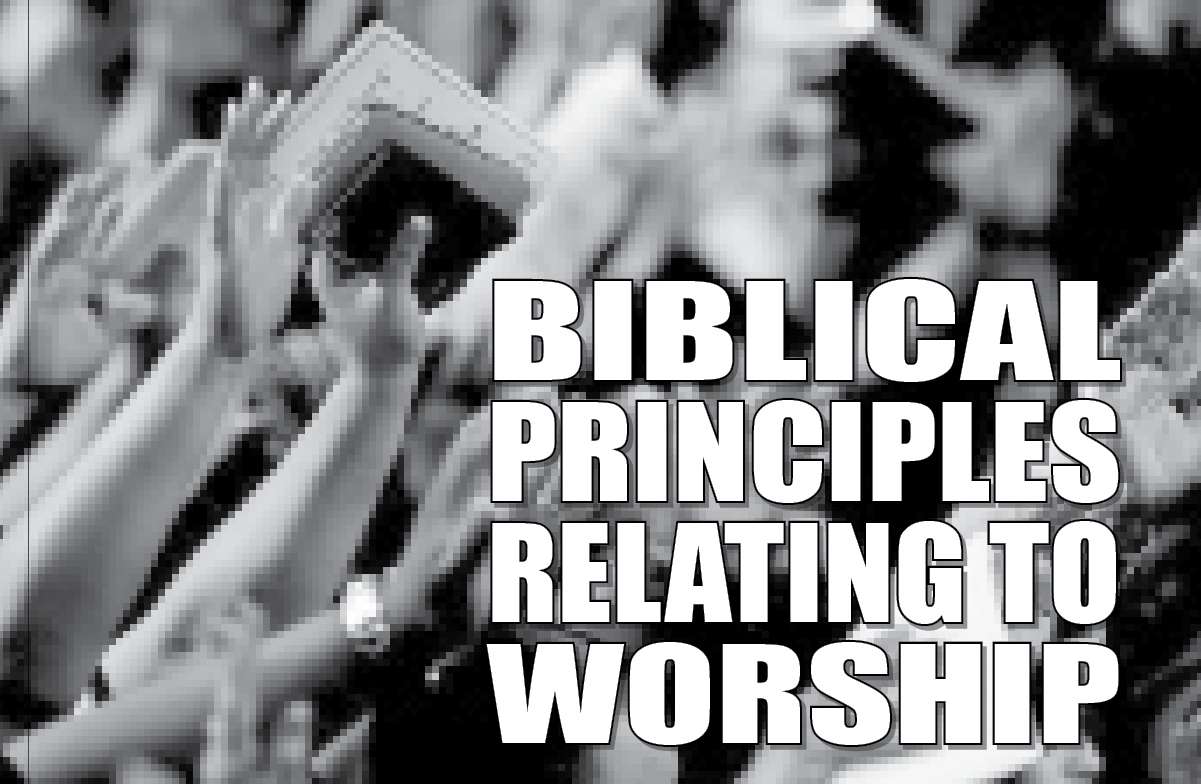

The Church Its Biblical Foundation
Dr. A. C. George
The Church that Jesus came to build has been in existence for almost two thousand years. With the fragmentation of the Church into so many groups and organizations, confusion prevails among many regarding the origin and nature of the Church. The focus of this article is to examine the biblical foundation of the Church in the Old Testament as well as the New Testament.
1. Etymology
The English word 'Church' is derived from the Greek adjective 'Kyriakos', which means the Lord’s. When combined with such words 'asoikiaor doma', for example, 'Kyriakeoikia',means 'the Lord’s house', a Christian place of worship. However, the New Testament word for 'Church' is 'ekklesia', which means 'a local congregation of believing Christians'. Ekklesia which is used in the Septuagint about 100 times can be translated as assembly, meeting, congregation, synagogue in different contexts. Only once it is used for Church and that is when Stephen in his speech, refers to the Israelites as “a church in the wilderness” (Acts 7: 38). It is worthy of notice that ekklesia was never used for a building. In the N. T. times ekklesia was a public assembly of citizens duly summoned for a purpose.
The tendency to make the places of worship more beautiful, expensive and ornate, as was done in the medieval period, simply ignores the fact that God places the premium not in the meeting places, but on the people who come together in the name of Christ to worship God “in the Spirit and in Truth”. (Jn. 4:24; Matt. 18:20). The early Church worshiped the risen Saviour wherever they could gather. When they did, they experienced the presence and power of God. They believed that the Spirit who dwelt in them made them the temple of the living God (1Cor. 3: 16). The experience of gathering together and worshipping their Lord and Saviour was more important to the early Christians than the place of worship.
2. The Biblical Foundation
a. In the Old Testament
There is no explicit references to or descriptions of the Church in the Old Testament. However, we do have some implicit references and foreshadowing of the Church in the O.T. The following examples may be sufficient to verify this truth.
• The Abrahamic Covenant
In God’s calling of Abraham and making him the Father of all nations on earth, we can catch a glimpse of God’s redemptive purposes for humanity (Gen.12:1-3; 22: 18). God’s promise to Abraham was that He would make him “a great nation” (Gen. 12:2) and that all peoples on earth will be blessed” through him (Gen.12:3). This covenant and the promise it involved was fulfilled through Isaac his beloved son and also through Ishmael, who also became the progenitor of a nation (Gen.21: 13). Isaac, Abraham’s true heir became the channel through which God intended to bless “all nations on earth” (Gen.22:18). The original covenant God made with Abraham (Gen.12:2,3) was renewed and reaffirmed later (Gen. 15: 18-21; 22: 15-20). Abraham thus became not only the Father of the Hebrews (Israel) but also the great ancestor of Jesus who came to the world through Abrahamic and Davidic line (Matt. 1:1). Jesus, the Messiah came not only for the descendants of Abraham (Jews) but also for those outside the scope of the covenant God made with Abraham’s descendantsat Sinai. St. Paul explains this clearly in Galatians when he cites the Abrahamic covenant and its implications for the gentiles and asserts that the gentiles are also involved in the blessing God gave to Abrahams. “All nations will be blessed through you”(Gal.3: 7- 9). That gospel (good news), Paul says, was announced to Abraham (Gal.3:8). The apostle Paul also states categorically that all those who rely on faith- rather than the works of the law – are the children of Abraham, regardless of their racial background (Gal.3:7).
From these passages it is clear that God’s plan of salvation included all racial groups, in the Abrahamic covenant and blessing. The terminology of the church, however, is absent.
• The Sinaitic Covenant
The descendants of Abraham who were delivered from the Egyptian bondage through the blood of the Passover lamb (Exo.12) “baptized” by the crossing the red sea (1Cor. 10:1,2) sustained by manna from heaven and water from the rock (1.Cor. 10:4) finally came to mount Sinai after three months’ journey. At Sinai they had an unforgettable encounter with God. There, God gave them the Law through the mediation of Moses. The law which covered every aspect of their personal and community life included the Decalogue (the Ten Commandments (Exo.19:f). Instruction for the construction of the tabernacle were also given (Exo. 25-31). The significance of Sinai was that Israel became a covenant community chosen by God to worship the true and only God, radiate God’s glory by being his witness (Exo. 19: 2; Isa. 49: 6; 60: 6; 44:8 etc.).
The old Israel chosen by God to be a special people and a holy nation foreshadows the “new Israel”- the Church, redeemed by Christ the Passover Lamb (1 Cor. 5: 7) and commissioned by Christ to serve as his witness and a royal priesthood in the world (Acts.1: 8; 1Pet.2:9).
While we can see a typological significance in the experience pf the old Israel, it is interesting to note that they were never called an ekklesia (church) in the Old Testament. The Septuagint (The Greek translation of the O.T.) however, used the word to refer to the congregation of Israel. Stephen the proto-martyr used this in his speech to refer to the old Israel – “the ekklesia in the wilderness” (Acts 7: 38). They were a “church in the wilderness”, worshipping God through sacrifices and offerings and experiencing God’s “glory cloud (shekinah) and fiery pillars which symbolized the presence of God with them. This, I believe, can be a good description of the Church in the world today – living in the desert and moving forward as pilgrims to reach the heavenly destination, while at the same time witnessing and impacting others to worship the true God.
b. In the New Testament.
The Church of the Lord Jesus Christ, which was anticipated and foreshadowed in the Old Testament through the Abrahamic and Sinaitic covenants and in the organizational structuring of the nation of Israel as a theocratic nation to bless the nations, became a concrete reality when the Messiah came to the world with a specific mission. He began his ministry with the announcement of the Kingdom of God and manifesting the nature of the kingdom through miracles and signs. He declared his mission on earth through powerful statements which constitute the foundation for our understanding of the Church. Just two of these statements need to be examined:
1.) The Nazareth Manifesto (Lk. 4: 18-21).
At the outset of his ministry in Galilee, Jesus went to the synagogue in Nazareth, as his custom was, and read from the scroll of Isaiah that passage dealing with the messianic mission. Labelled as the “Nazareth Manifesto” by New Testament scholars, this prophecy unfolds the mission of Christ: good news to the poor, freedom to the captives, eye sight to the blind, release for the oppressed and the year of jubilee. Then Jesus announced boldly “Today this scripture is fulfilled in your hearing” (4: 21). By this Jesus meant that he is the “anointed one”, Isaiah spoke of and that his mission would be characterized by deliverance of various kinds which will bestow the favour of God on people. Even though Jesus did not use the word “Church” in this context, he implied that these components will be present in the dispensation of the Church. From the Book of Acts we learn that these elements were present in the ministry of the apostolic Church.
2.) The Petrine Confession and Jesus’ declaration.
When Jesus demanded a personal confession and declaration of faith from his beloved disciples, while they were in the region of Caesarea Philippi, Peter answered without any hesitation, “you are the Messiah, the son of the living God” (Matt. 16:18). Responding to this faith statement Jesus told Peter that he was truly blessed because of the revelation he got straight from the Father. Jesus went on to say that he came to earth with the mission of building a Church for himself and that Peter also will have a share in that mission.
The Roman Catholic Church interprets this statement of Christ quite differently. The Greek text of Matt. 16: 18 uses two words 'petros' and 'Petra' (you are Peter (Petros, a piece of rock) and on this rock Petra, a rock bed) I will build my Church). The Catholic Church developed the doctrines of the “primacy of Peter” and the “apostolic succession” which made Peter as the first bishop (Pope) and all the other Popes as his successors. The Bible makes it very clear that the true foundation and cornerstone of the Church is Christ himself (Matt. 21: 42; 1Cor. 3: 11). God also used human instruments like “apostles and prophets” in the building of the Church, “with Christ Jesus himself as the chief cornerstone” (Eph. 2:20). The apostle Peter never claimed any primacy for himself, but referring to the Church as the “spiritual house” he affirmed the truth that Christ, the “stone” and the “rock” alone is the “cornerstone” of this house (1Per. 2: 4-8).
The architect of the Church who said “I will build my Church” began his building activity using believers as “living stones” to construct the spiritual house. On the Day of Pentecost, with the descent of the Holy Spirit upon those who were waiting in the upper room, the Church became a visible entity. The Spirit welded them into a community of grace. Their spiritual life was characterized by prayer, worship, fellowship, breaking of bread, witness etc. (Acts. 2: 42- 47). The ripple that began in Jerusalem continued to expand to the Greco-Roman world through the missionary activities of Paul and others. That is the story we get from the Book of Acts.
3.) The “Mystery” of the Church (Eph.3: 2-6)
The apostle Paul wanted to share with the Ephesian believers the mystery which was revealed to him. The heart of that revelation is that the Church is not a mono-ethnic community – like the Jewish community, but a multi-racial, multi-cultural and multinational community, brought together by God into a living body. This has been made possible through the work of Christ on the cross, by which he pulled down all walls and broke all barriers which divided Jews and gentiles and effected reconciliation (Eph. 2: 11- 16). Therefore, all have “access to the Father by one Spirit” (Eph. 2: 18). This is the beauty of the Church, crafted by the architect of the universe. Truly, a trophy of God’s grace!
c. The Church: local and Universal.
Taking the literal meaning of Jesus’ statement “I will build my Church” (ekklesia) we may infer that he was referring to the corporate body of believers scattered throughout the world. The Pauline concept of the Church as “body” (1 Cor. 11: 29 etc.) which is made up of many parts, yet constituting an organic unity, reinforces the idea of the oneness of the Church. Jesus prayed for the unity of the future believers: “that all of them may be one, just as you are in me and I am in you” (Jn.17:.21). In Acts 9:31 when Luke speaks of the “Church throughout all Judea and Galilee and Samaria”, we get the idea of the oneness of the Church, in spite of differences in locality and other diversities. From God’s perspective, there is only one Church, one gathering of all under the headship of Christ. The body of Christ is indeed a unity in diversity, bound together by the cord of the Spirit.
While the above picture of the Church as a universal body is very much biblical, the leading New Testament scholars point out that in the N. T. ekklesia is always described and ordered in terms of its particular, local form. Wherever there is a gathering of true believers, there is an ekklesia – whether it is Jerusalem or Antioch or Ephesus or any other part of the globe. What matters is not the location, but the common bond by which believers are connected to each other as Paul said: “There is one body and one Spirit, just as you were called to one hope when you were called; one Lord, one faith, one baptism; one God and Father of all, who is over all and through all and in all” (Eph. 4: 4-6).
Today we have different patterns of Church organization and administration. The concept of a universal Church headed by one human leader is foreign to the scriptures. The pattern we learn from the churches of the first century is that of local church which is autonomous in terms of administration of gifts and ministries. The Church at Antioch, to cite an example, was not under the church of Jerusalem, even though it was the first centre of Christianity. Yet there was cooperation and mutual encouragement between the two. The famine relief which Antioch sent to Jerusalem (Acts. 11: 29,30) was a token of their fellowship and compassion and not a sign of Jerusalem’s superiority over Antioch.
The Church, which was anticipated and foreshadowed in the Old Testament became a visible reality on the Day of Pentecost. The one who said “I will build my Church” continues to build it using his instruments here on earth. The Church, which St. Paul describes as “the pillar and foundation of the truth (1 Tim. 3: 15) must be committed to proclaim the truth of the gospel until the whole world will hear and experience the salvation Jesus offers freely to everyone who believes.








